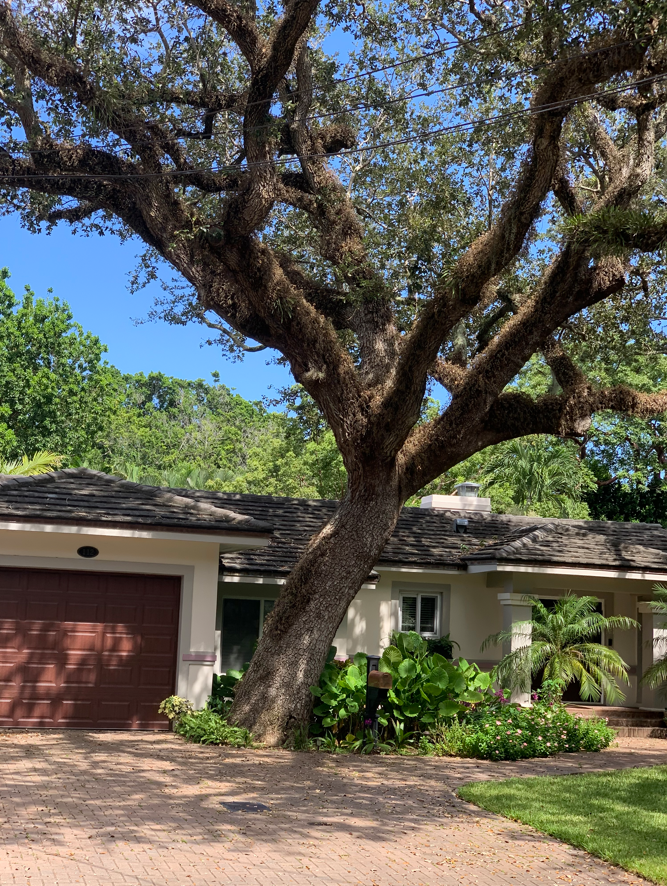Ian. When Will We Ever Learn?
When we moved to Florida in 1971, a number of people told us that we were smart to buy in Fort Lauderdale's old Colee Hammock neighborhood. Our house was reportedly 18 feet above sea level and even though we were only a mile from the beach we were high enough to ride out hurricanes with minimal threat, at least from flooding. The only obvious hazards were the old oak trees which could come down in high winds, but that did not happen often. Those trees had been around for a hundred years and sometimes much more. They had seen a storm or two. It was not our principal motive for purchasing there, but it was a reassuring factor.
We had been looking to the west, where most young families were moving at the time, but we were also advised that much of that land was low lying, and prone to flooding. If it seems strange that we were getting such advice 50 years ago, keep in mind that Fort Lauderdale's downtown had seen flooding in the 1960s and people who had been here for a while were quite aware of the water danger when hurricanes came. Since then, various flood control measures, improved drainage and pumping, have been put in place, and people tend to forget the advice about location that we were fortunate to hear five decades ago.
That advice is still useful. People who care about what's going on in Fort Lauderdale know the neighborhood’s at risk. Some of them are very expensive waterfront properties, notably the south side or Las Olas Boulevard. And, as the Sun Sentinel has recently observed, overbuilding in the downtown has the dual effect of paving over land that could absorb water, at the same time exposing greater numbers of people to the dangers of high wind and water. And it can happen, as we learned in 2004 when the freakish hurricane Wilma came through from the west, complete with tornados that did a pretty good job of damaging both buildings and homes unlucky enough to get hit. That included this writer's home which saw an old oak (42 inches at its base) snap about eight feet up and land on our roof. Fortunately the thick branches cushioned the blow, resulting in only three patchable holes. And we were lucky to be home to bale out the water as fast as it poured in.

Colee Hammock is known for classic old oaks and high elevation
Our point, of course, relates to the disaster called Ian and the huge number of people who have moved into Gulf Coast communities long recognized as prone to flooding in a major storm. Flood damage is not a rarity. Recent years have seen its effects on Florida's Panhandle, Louisiana and Texas. Florida's southwest coast had been hit hard in the not too distant past, and it was only a matter of time before a really big one would arrive. You have to ask if the builders and real estate people, who certainly knew the score, warned buyers of the dangerous locations - near shallow water posing the risk of storm surge. Judging by the fact that so few had flood insurance suggests the new residents, which are the great majority of people there, were not aware of what they were buying into.
We have seen the pathetic testimony of people who have lost everything and have no insurance or personal resources to recover. At least part of that burden is going to fall on all of Florida and the federal government. We wonder if that is fair to people who bought property more thoughtfully to pay for those who did not? And what about rebuilding? Many of those on Sanibel and Captiva have money, and can afford to rebuild even without government help. But that is not true for people in less expensive towns that were savaged. And should those places even rebuild? And if so, should they not be constructed to withstand the worst case storm such as Ian - those once-in-a-hundred-year events that, if climate change continues at the present pace, may be more like once in a decade? The Jersey Shore has already seen construction of beachfront houses built on stilts to avoid storm surges, but that is a costly remedy that few of Ian's victims can afford.
An irony of all this is that there has been relief that the storm did not hit Tampa Bay as originally projected. The loss would have been much worse. And yet that already highly populated area is expected to grow even faster in the next few years. The worst may be yet to come.
Perhaps what we need are more people who give newcomers the advice we were lucky to get 50 years ago. When it comes to hurricanes, buyers beware.

this article
This Comment had been Posted by Jerry Jordan
Bernie. I arrived in Ft.Ldle in 1971 after returning from Viet Nam. My family had already moved here from Chicago several years earlier. The town has come a long way. Corrupt politicians and all. Best to you and Peg. Jerry Jordan
Being inundated
This Comment had been Posted by tom mc gill
Back in 2012 when Hurricane Sandy struck, our home on Long Beach Island had 14 inches of water on the ground floor. The entire floor and contents had to be replaced.I have empathy for all those who have experienced destruction.